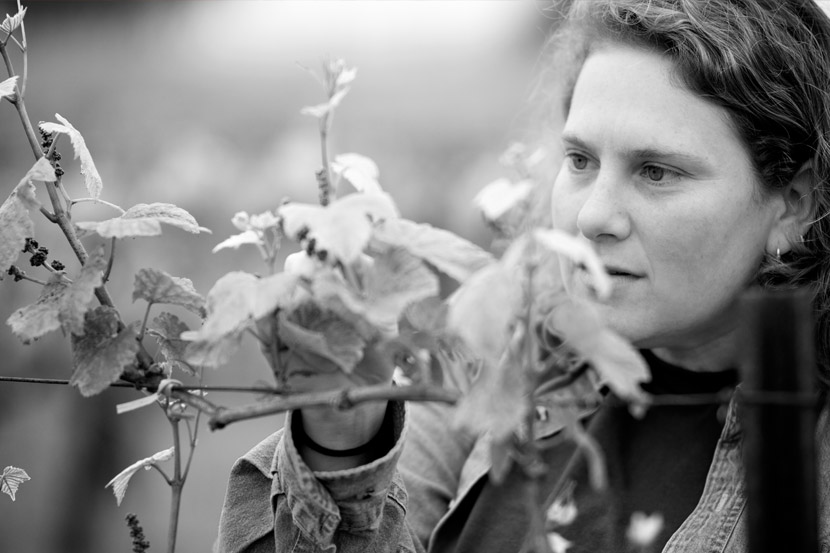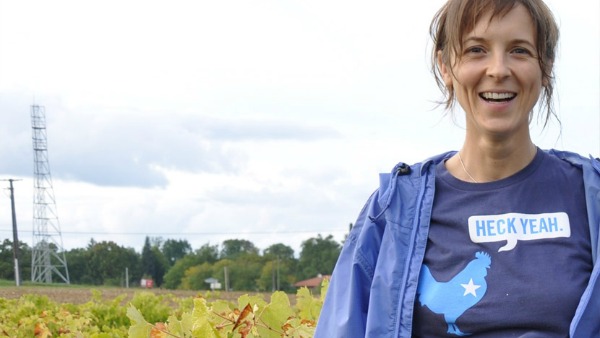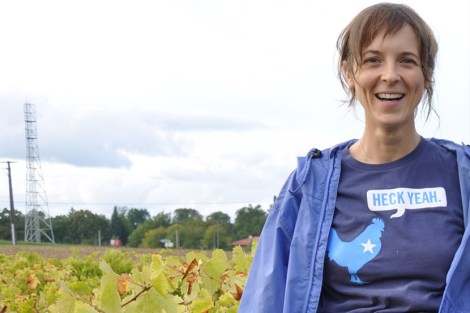For 56-year-old Tammy Burnell, who lost everything she owned in the 2008 Iowa floods, it’s the freedom to stand in the verdant fields of Burnell Farms in Royston, Ga., and call out to the heavens — and know no one can hear her.
Hannah Breckbill, 25, walked from a career as a mathematician and settled in Elgin, Minn., planting Humble Hands Harvest “to work in something real and be the change I want to see happen in this world.”
Forty-one-year-old Pilar Rebar quit her job as a pesticide applicator when she realized she had been told lies about the chemicals she was spraying on crops. Vowing to only grow “clean and healthy food,” she started up Sunnyside Organic Seedlings in Richmond, Calif.
Meet three of America’s female farmers, the most rapidly growing segment of the nation’s changing agricultural landscape. The U.S. Department of Agriculture’s Economic Research Service reported last month that the number of woman-operated farms more than doubled between 1982 and 2007. Add primary and secondary operators, and there are nearly 1 million women in farming, accounting for 30 percent of U.S. farmers.
So hot is ag life that novels about farming are replacing chick lit, offering an unexpected twist to the notion of dirty romance.
Unlike the Farmettes and Women’s Land Army that took over while men fought in World War II, women today see farming as both a mission and a passion. Some want to provide healthy food for the masses. Others are looking to build community or live a life of deeper meaning.
“Women want to be outside, they want to be near family. There’s lots of interest in where our food comes from, how it was grown,” says Kathleen Merrigan, former deputy secretary of the U.S. Department of Agriculture. “We are seeing more beginning farmers coming in and I think the trend is going to continue. Women are [already] outnumbering men in owning smaller farms.”
They arrive on farms — urban and rural, large and small — from two opposite worlds. Many are 40 and older, leaving behind office jobs and careers for the opportunity to get their hands dirty and create something tangible. At the other end of the spectrum are younger women who are coming out of agricultural and environmental science programs with a dedication to food justice, education, and reminding a nation led astray by fast food and TV dinners where its sustenance really comes from. There is also an older generation of women who have outlived their husbands and now own vast amounts of farm and ranchland.
Combined, they are making new inroads for women who are determined to build a life around farming.
Tammy Steele, director of the Oklahoma-based National Women In Agriculture Association, says female farmers have gained the respect not only of the USDA but also of the national farming community. That was missing, Steele explains, during the ’60s back-to-the-land movement, when women were more concerned with breaking the glass ceiling in corporate America than they were in tilling the earth.
What’s more, female farmers have shattered the old stereotypes. St. Paul, Minn.’s Der Thou grows flowers. Teresa Brockman of Eureka, Ill., grows 25 varieties of fruit on her Sunny Lane Farm. Debby Zygielbaum, in her 30s, raises sheep and grows organic grapes, olives, and fruits for Robert Sinskey Vineyards in Napa Valley, Calif. These women are a garden of variety.

Kristina Beuning runs a community-supported agriculture operation and owns the Sunbow Farm in Eau Claire, Wis. She’s been farming for 10 years.
Women do face some unique challenges in this business. Since women’s farms tend to be smaller, many need assistance with business plans and financing. Access to equipment can be limited. Many seek advice on marketing and how to get their goods to the public. As a result, we’ve seen the emergence of organizations such as the National Women In Agriculture Association and the Women, Food and Agriculture Network, both of which are seeing their memberships soar, as well as other, less formal networks.
Not everyone needs help, of course. Haylene Green, 68, farms alone on a single acre in Atlanta’s tough West End, raising organic Caribbean vegetables, among them her famous “huge fatty bum-bum” tropical pumpkins. But others set up businesses with friends, sisters, brothers, same-sex partners, fathers, mothers. They’ve created sisterhoods, networks for sharing livestock and tractors, seeds, labor, financial assistance, and know-how.
Many of these networks are still unrecognized by the mainstream, but some are breaking into the open. Soil Sisters offers tours of organic farms in south-central Wisconsin as part of MOSES, the Midwest Organic Sustainable Education Service. The MOSES Rural Women’s Project is led by 46-year-old Lisa Kivirist of Browntown, Wis., who with her husband left a career in advertising at Chicago’s Leo Burnett 17 years ago to start the Inn Serendipity Farm and B&B. Annie’s Project, which offers assistance with everything from risk management to business plans to marketing, has expanded nationally.
It makes perfect sense, says Merrigan, the former USDA chief: “Women are agriculturalists globally. The U.S. is trying to catch up.”
What is most apparent, though, is how content these women are with their agrarian lives. “Women make the food choices, they make the choices on what to feed their family, so their movement into farming is very natural,” says Temra Costa, author of Farmer Jane: Women Changing the Way We Eat and the force behind the website Farmer Jane. Costa lives outside of Oakland, Calif., where she homesteads with chickens and a small vegetable plot.
Tammy Burnell, for her part, says she’s known she wanted to be a farmer since she was 6 years old. Throughout the years she kept having a dream, even though she lived in Cedar Rapids, Iowa, that she was growing vegetables in Georgia, near a pond. “Then the flood came and we lost everything,” Burnell says. What next? She typed “Georgia Organics” into Google and up came an 85-acre farm for rent. “So we loaded our ’57 red Chevy truck bearing a water ring from the flood and took off.”
Burnell uses a plot of the farm she rents to teach young women to farm. She calls them “the blooms.” “What do I love about farming? Teaching. And being able to say I want a fresh salad and walking 20 feet and picking lettuce or a sweet pea for me and a customer,” Burnell says. “Like all the women farming and wanting to farm, I know this: We all want to lift our hands and praise the food, trees, and birds, and scream on the top of our lungs how great it is. And no one hears, not a soul.”




